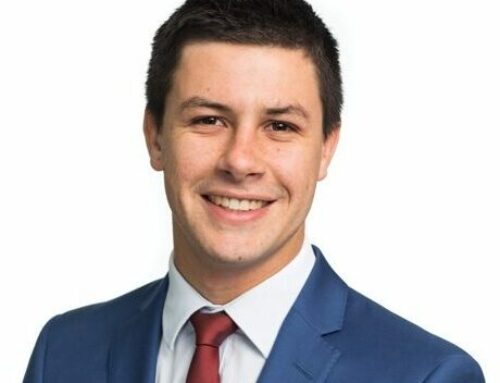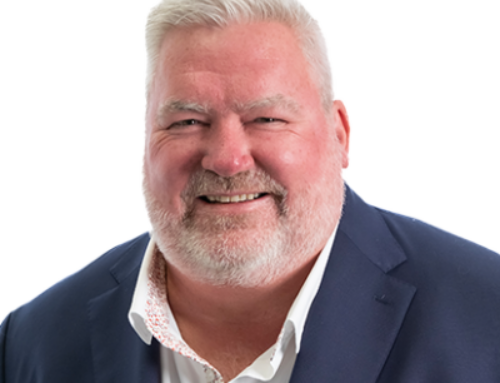Matthew is a senior mechanical engineer with a reputation for practical, efficient designs that are ‘buildable’. He has extensive experience in heating, ventilation and air conditioning design and construction, with a broad experience base from technical scientific to large commercial projects.
He is passionate about quality buildings and client satisfaction, demonstrated by a national AIRAH ‘excellence in air conditioning’ award win for a project he designed. Matthew has specialist experience with projects in all major cities in Australia and overseas and has extensive experience in defence, airports, industrial, workshops, health, education, general commercial and transport installations.
Here are some reflections from Matthew on his career to date, including highlighting delivery of a research facility in an engineering building for a major university in Queensland.
What inspired you to become an engineer?
I was always heading towards engineering. As a youngster I fixed things that did not need fixing, then tuned dirt bikes, then focused on adding V8s to cars that did not need them. I believe that we all have a tendency or aptitude to move into an area that suits us. It is unfortunate if a person does not get the opportunity to go the way that suits them. But, in my case I recognised this opportunity and followed it with a goal to do it as good as I can…or go home. So, I was always destined to be an engineer.
Why mechanical engineering?
I started in electrical engineering at university and then found out this suited some, but mechanical suited me and I simply switched focus.
Moving into the workplace, the list of items I needed to know in mechanical engineering was so broad it was never ending. I found by embracing this, every day I had something interesting to do or solve. This also forced me to learn an engineering item every day to keep up with mechanical design and technology, and forty years later I still make sure I learn something new every day.
For me, mechanical engineering was and is too interesting not to be involved in, in all facets, and I still feel there is so much more to know. Consulting firms such as NDY and Tetra Tech have significant project diversity – workshops, defence, hospitals, office towers, labs, stadiums, the list goes on – and the mechanical engineering within these projects has a multitude of design elements, so staying in the mechanical engineering field is pretty easy, as it just stays interesting.
What’s your career highlight project?
I have worked on so many different projects from major city hospitals, stadiums, office towers, defence, hangars, airports, mining, that it is hard to nominate just one. I thought I would detail a smaller, more technically focused facility with something different than central plant, air conditioning systems and fluids/gases.
In delivering a research facility in an engineering building for a major university in Queensland, NDY and Tetra Tech were the only consultants requested to take on the works. We were asked to resolve a previous design and improve the technology used, and our mechanical engineering team designed all systems and undertook project management. As the project had stalled, part of our job was to drive it and get it moving. The project was a microgrid for multiple energy source testing and also a high speed hydrogen knock engine testing facility.
Tell us about the mechanical engineering on this project.
The microgrid was the interesting component (less so the engine testing lab) and required connecting multiple power sources to a central control panel. Works involved a new hydrogen gas supply serving a hydrogen fuel cell installation, diesel generator, DC battery bank, solar panel bank on the roof and major test panel, which were all installed in a glass demonstration laboratory with new gases, controls, ventilation and air conditioning. NDY and Tetra Tech designed all building services including the control system, electrical, security and mechanical systems.
This project led to our designing a much larger and more complex research facility which, for those of you with a passion for these things (like me), had furnace fire testing rigs, an ethanol reactor, ethanol production plant, aquaculture research and a 400 kW liquid nitrogen cooled submarine motor test rig.
The challenges included:
- Technically resolving fault paths in the microgrid panel.
- Keeping researchers and professors on track and on budget, convincing them to remove previous over-design on HVAC and plant cooling systems.
- We needed inductive loads and resistive loads, to do this at low cost we purchased all the oil heaters from the local electrical retailer (resistive loads) and ordered a group of large fans (for inductive loads), then designed the test rigs and controls for these.
- We needed a wind generator with no wind on the site, so we simulated this with an electric motor on the roof with a control system to simulate the local wind profile.
- Explosive gases zones were locally reduced with ventilation systems.
What innovative new approaches are you seeing when it comes to mechanical engineering?
Innovation is just continual and never stops with mechanical systems:
- Control systems have grown to another amazing level in recent years, with IP based integrated systems, predictive maintenance and complex programming. So, we now think in the controls world a lot more and some are now talking about the use of AI.
- The plant we use has lower environmental impacts on the world especially for CO2 emissions, and energy recovery is commonplace and considered normal.
- We explore a lot more and try different systems. Our belief is growing that there are very few limits in engineering (within the laws of physics of course).
- We are moving away from durable high energy use plant to lighter, more efficient and controllable systems. We are considering zero emissions and embodied energy as we design.
- We are now embedded within the full electric world direction and no longer try to burn fossil fuels such as gas for heating.
- Innovation takes consistent effort and immersion in the marketplace, if we fail to learn and explore we are left behind very quickly. We cannot rest on our laurels.
If you’ve worked across regions, countries, and/or Tetra Tech operating units, can you tell us about the key similarities and differences you’ve encountered when it comes to mechanical engineering and your projects?
As an engineer I have had the opportunity to visit a number of countries and tour engineering facilities, buildings and meet with overseas partners. I also have designed buildings in Libya, the United Kingdom (UK), China, New Zealand, Vietnam and Papua New Guinea, while also assisting technically, at least in a small way, on projects in a number of other countries.
NDY has allowed me to be involved in the Tetra Tech High Performance Buildings Group representing mechanical services, with meetings and discussions with our Tetra Tech colleagues in the USA and the UK. Based on these interactions and history, it is very clear to me that engineers across the world can work almost anywhere and can move around without too many issues. We all seem to be moving to a common pathway with a common goal of making the world a better place. Who better than an engineering firm to achieve this goal?
If I have a discussion with an engineer in the UK or USA they all state the same items of focus, such as reducing use of fossil fuels or using different equipment. As part of this, I am learning more about cold climate designs, not that I need it normally working in Queensland, but it is interesting.
Where do you see the future of mechanical engineering heading?
Mechanical engineering is a major player in the field of lowering global emissions and emissions reduction. This is where we are heading, albeit clearly too slowly and we need more urgency.
Whenever I think innovation is approaching limits, clever engineers, manufacturers and scientists continually prove this incorrect. It is great to be part of implementing mechanical engineering systems that clever people come up with and get the best out of systems. It does not get any better than this so it’s a great time to be in engineering, now and into the future.
I see major changes in how we think and what we do, and I hope in 10 years our current designs will be looked at with a condescending smile by the next generation of engineers. If that happens in 5 years then even better!
What legacy do you want to leave, when it comes to your career?
I am keen to do my part and ensure well trained engineers in the marketplace and not see a reduction in engineering design quality, as we sometimes see happening. I see a well trained engineering team (including all people in the team such as modellers, administration, engineers and project managers) as the only pathway to do what we do even better. This will mean we can all leave a legacy of buildings that work well and train the next and the next generation, including continued improvements in female participation in engineering.
It would be nice to work with Elon and his starship to leave a space legacy, but maybe I’ll just wait and see how it goes.










